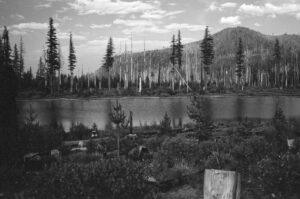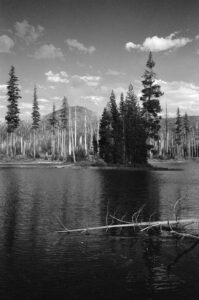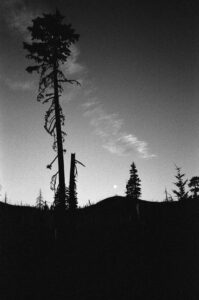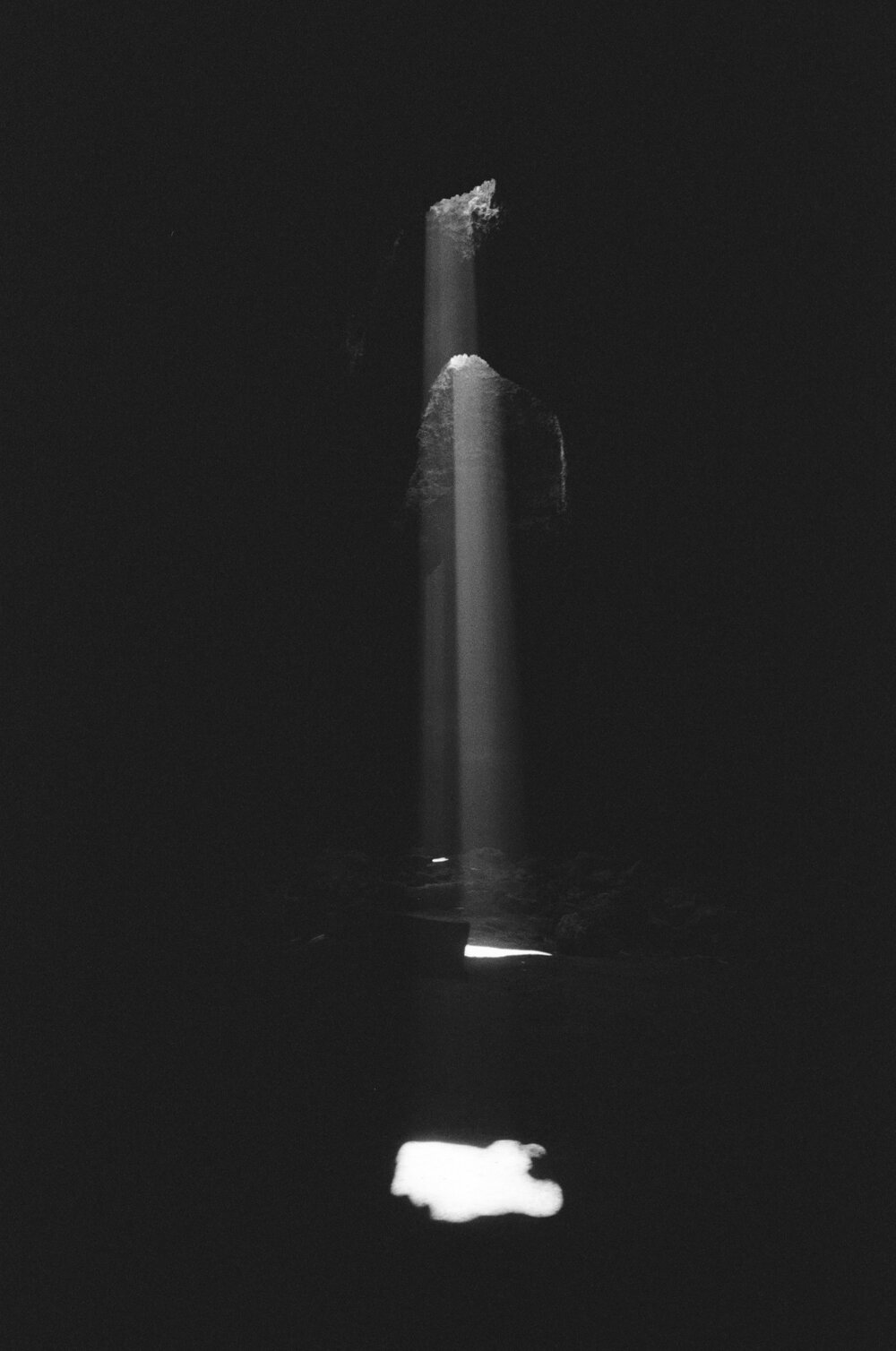For me a trip to the Skylight Cave means doing a bit of camping in the Deschutes National Forrest. I usually set up camp at a small lake along Forrest Service Road 2067. You will not find the usual comforts of an established campground here. Water and what to do when nature calls are dealt with by the camper. It takes a vehicle with plenty of ground clearance to reach these parts. It also takes a driver with plenty of patience. Traveling along the tight, twisty, and bumpy Forrest Service road is slow going.
In decades past a fire devastated the forrest here. Unlike the fallen trees in the damp forrest further northwest of here the dead wood lingers in the high desert. The dirt here is a sandy and gritty mixture of soil and volcanic ash. Gusts of wind have a habit of sprinkling the fine particles into unsuspecting beverages and meals. Shoes worn here are never the same afterwards.
Still there is plenty of life to be found here. The lake is home to toads by the thousands. This year they had just transitioned from their tadpole stage, but still lingered at the edge of the water not quite ready to go on land. I was lucky enough to see a mother duck and her hatchlings swimming in the lake from my paddle-board.
This particular lake has a small island in the middle of it. Luckily for the trees the fire could not cross the water to reach the island. They now stand as a monument to life before the fire in stark juxtaposition to the toothpick forrest that surrounds them. Smoke from nearby wildfires is a constant reminder of how easily any sign of recovery here can be lost.
This place is far from any city lights. The moon lights the hills and the stars can be seen the way they were meant to be seen. Against the black backdrop of an unpolluted sky. I was lucky enough to be here when the moon was nearly full. It could be seen rising over the hills before the sun fully set.
Going to the cave involves more traveling on the primitive Forrest Service roads. Driving is tedious and slow. Something to take into account when visiting the caves for the morning light-show.
The Skylight Cave is a volcanic formation below the surface of the earth. There are three openings at the top of the cave. From the surface the openings are easy to miss. A nondescript and likely unofficial trail leads from the entrance to the openings for the curious and unaware alike. It would be easy to fall in.
The cave itself has a cathedral-like quality. Visitors tend to speak in hushed voices and whispers despite the lack of any such requirement. The walls of the cave meet along the top to form an arch. In the summer light filters in through the three openings from around 9:30AM to 10:30AM. The rays of light look like spotlights shining from above. The colors of the cave walls are illuminated and reddish. If someone steps inside one of the rays of light the walls of the cave are painted with whatever color they wear. In contrast to the dry desert air on the surface the cave feels humid. Cool, not cold.
If you are lucky like I was you will get a moment to yourself in the cave. If you are careless like I was you will hit your head and split open your scalp walking out of the cave. Carry a flashlight, watch your step, and watch your head when entering and exiting the cave.



